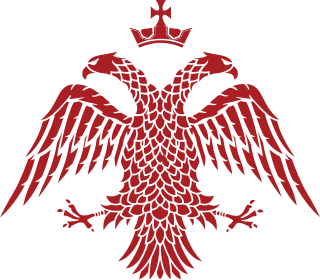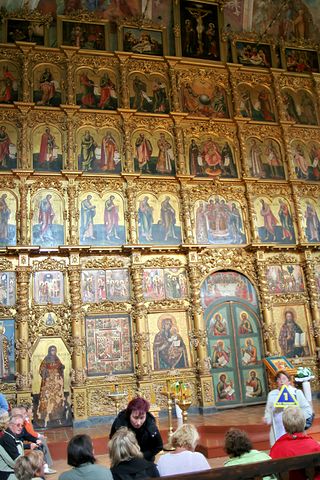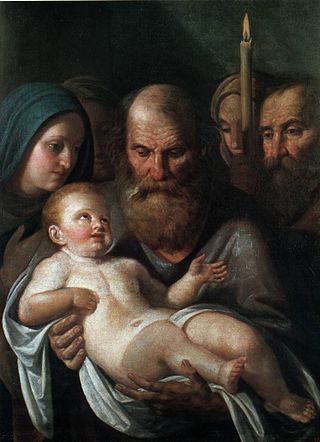
The New Calendarists are Eastern Orthodox churches that adopted the Revised Julian calendar. [1]

The New Calendarists are Eastern Orthodox churches that adopted the Revised Julian calendar. [1]
In the history of Christianity, divisions on which calendar to use were initiated after 1582, when the Roman Catholic Church transitioned from the ancient Julian calendar to the new Gregorian calendar. [2]
Eventually, by the 18th century, the Gregorian Calendar was officially adopted even in Protestant countries as the civil calendar, but still faced some opposition from smaller groups. In the Kingdom of Great Britain, the Gregorian calendar was officially introduced in 1752. [3]
Around the same time, debates between those wanting to adopt the Gregorian Calendar and traditionalists wanting to keep the Julian calendar were also going on within several Eastern Catholic Churches. Those debates were focused mainly on ritual questions and ended in various compromises. The need for preservation of ritual differences, including various questions related to liturgical calendar, was consequently acknowledged by Rome. [4]
In 1923, the Revised Julian calendar was devised. Since then, several Eastern Orthodox Churches have introduced partial changes into their liturgical calendars. [5] Those changes were based on the application of the Revised Julian calendar for the liturgical celebration of immovable feasts (including Christmas), thus reducing the use of the old Julian calendar to liturgical celebration of moveable feasts (feasts of the Easter cycle). [6]
Thus, the Revised calendar use was introduced. It has been adopted by:
The Orthodox Church in America (except for Alaska) and the Albanian Orthodox Church also use the revised calendar.
It was not adopted by the Eastern Orthodox Churches of:
The Polish Orthodox Church has wavered between the two calendars; today it officially follows the old calendar. [7]
In Eastern Orthodoxy, issues related to calendar reform did not produce break of communion or schisms between the mainstream churches, but they did cause disputes and internal schisms within some churches. The result of those conflicts was the emergence of the Old Calendarist movement, and consequent creation of separate churches, thus breaking the communion with those mother churches that accepted the calendar reform. [7]

The Eastern Orthodox Church, also called the Orthodox Church, Greek Orthodox Church, or officially the Orthodox Catholic Church, is the second-largest Christian church, with approximately 220 million baptised members. It operates as a communion of autocephalous churches, each governed by its bishops via local synods. The church has no central doctrinal or governmental authority analogous to the head of the Catholic Church—the pope, although the Ecumenical Patriarch of Constantinople is recognised by them as primus inter pares, a title formerly given to the patriarch of Rome. As one of the oldest surviving religious institutions in the world, the Eastern Orthodox Church has played a prominent role in the history and culture of Western Asia, the Caucasus, and Eastern and Southeastern Europe.
The Eastern Orthodox Church, officially the Orthodox Catholic Church, is a communion composed of up to seventeen separate autocephalous (self-governing) hierarchical churches that profess Eastern Orthodoxy and recognise each other as canonical (regular) Eastern Orthodox Christian churches.
A moveable feast is an observance in a Christian liturgical calendar which occurs on different dates in different years.
The Revised Julian calendar, or less formally the new calendar and also known as the Milanković calendar, is a calendar proposed in 1923 by the Serbian scientist Milutin Milanković as a more accurate alternative to both Julian and Gregorian calendars. At the time, the Julian calendar was still in use by all of the Eastern Orthodox Churches and affiliated nations, while the Catholic and Protestant nations were using the Gregorian calendar. Thus, Milanković's aim was to discontinue the divergence between the naming of dates in Eastern and Western churches and nations. It was intended to replace the Julian calendar in Eastern Orthodox Churches and nations. From 1 March 1600 through 28 February 2800, the Revised Julian calendar aligns its dates with the Gregorian calendar, which had been proclaimed in 1582 by Pope Gregory XIII.

Western Christianity is one of two subdivisions of Christianity. Western Christianity is composed of the Latin Church and Western Protestantism, together with their offshoots such as the Old Catholic Church, Independent Catholicism and Restorationism.

Eastern Christianity comprises Christian traditions and church families that originally developed during classical and late antiquity in Western Asia, Asia Minor, Eastern Europe, Southeastern Europe, the Caucasus, Northeast Africa, the Fertile Crescent and the Malabar coast of South Asia, and ephemerally parts of Persia, Central Asia and the Far East. The term does not describe a single communion or religious denomination.

The Coptic calendar, also called the Alexandrian calendar, is a liturgical calendar used by the Coptic Orthodox Church and also used by the farming populace in Egypt. It was used for fiscal purposes in Egypt until the adoption of the Gregorian calendar on 11 September 1875. This calendar is based on the ancient Egyptian calendar. To avoid the calendar creep of the latter, a reform of the ancient Egyptian calendar was introduced at the time of Ptolemy III which consisted of adding an extra day every fourth year. However, this reform was opposed by the Egyptian priests, and the reform was not adopted until 25 BC, when the Roman Emperor Augustus imposed the Decree upon Egypt as its official calendar. To distinguish it from the Ancient Egyptian calendar, which remained in use by some astronomers until medieval times, this reformed calendar is known as the Coptic or Alexandrian calendar. Its years and months coincide with those of the Ethiopian calendar but have different numbers and names.

In the Western liturgical year, Lady Day is the traditional name in some English-speaking countries of the Feast of the Annunciation, which is celebrated on 25 March, and commemorates the visit of the archangel Gabriel to the Virgin Mary, during which he informed her that she would be the mother of Jesus Christ, the Son of God.

The Church of Greece, part of the wider Greek Orthodox Church, is one of the autocephalous churches which make up the communion of Eastern Orthodox Christianity. Its canonical territory is confined to the borders of Greece prior to the Balkan Wars of 1912–1913, with the rest of Greece being subject to the jurisdiction of the Ecumenical Patriarchate of Constantinople. However, most of the dioceses of the Metropolises of the New Lands are de facto administered as part of the Church of Greece for practical reasons, under an agreement between the churches of Athens and Constantinople. The primate of the Church of Greece is the archbishop of Athens and All Greece.

The Byzantine Rite, also known as the Greek Rite or the Rite of Constantinople, is a liturgical rite that is identified with the wide range of cultural, devotional, and canonical practices that developed in the Eastern Christian church of Constantinople.
Old Calendarists, also known as Old Feasters (palaioeortologitai), Genuine Orthodox Christians or True Orthodox Christians, are traditionalist groups of Eastern Orthodox Christians who separated from mainstream Eastern Orthodox churches because some of the latter adopted the revised Julian calendar while Old Calendarists remained committed to the Julian calendar. Old Calendarists are not in communion with any mainstream Eastern Orthodox churches. "Old Calendarists" is another name for the True Orthodox movement in Romania, Bulgaria, Greece and Cyprus.

Russian Orthodoxy is the body of several churches within the larger communion of Eastern Orthodox Christianity, whose liturgy is or was traditionally conducted in Church Slavonic language. Most Churches of the Russian Orthodox tradition are part of the Eastern Orthodox Church.

The Melkite Greek Catholic Church, or Melkite Byzantine Catholic Church, is an Eastern Catholic church in full communion with the Holy See as part of the worldwide Catholic Church. Its chief pastor is Patriarch Youssef Absi, headquartered at the Cathedral of Our Lady of the Dormition in Damascus, Syria. The Melkites, who are Byzantine Rite Catholics, trace their history to the early Christians of Antioch, formerly part of Syria and now in Turkey, of the 1st century AD, where Christianity was introduced by Saint Peter.
The Eastern Orthodox liturgical calendar describes and dictates the rhythm of the life of the Eastern Orthodox Church. Passages of Holy Scripture, saints and events for commemoration are associated with each date, as are many times special rules for fasting or feasting that correspond to the day of the week or time of year in relationship to the major feast days.

Simeon at the Temple is the "just and devout" man of Jerusalem who, according to Luke 2:25–35, met Mary, Joseph, and Jesus as they entered the Temple to fulfill the requirements of the Law of Moses on the 40th day from Jesus' birth, i. e. the presentation of Jesus at the Temple.
In Christianity, the Nativity Fast—or Fast of the Prophets in Ethiopian Orthodox Tewahedo Church and Eritrean Orthodox Tewahedo Church—is a period of abstinence and penance practiced by the Eastern Orthodox Church, Oriental Orthodox Church and Catholic Church in preparation for the Nativity of Jesus on December 25. Ethiopian and Eritrean Orthodox Churches commence the season on November 24 and end the season on the day of Ethiopian Christmas, which falls on January 7. The corresponding Western season of preparation for Christmas, which also has been called the Nativity Fast and St. Martin's Lent, has taken the name of Advent. The Eastern fast runs for 40 days instead of four or six weeks and thematically focuses on proclamation and glorification of the Incarnation of God, whereas the Western Advent focuses on three comings of Jesus Christ: his birth, reception of his grace by the faithful, and his Second Coming or Parousia.

The West Syriac Rite, also called the Syro-Antiochian Rite and the West Syrian Rite, is an Eastern Christian liturgical rite that employs the Divine Liturgy of Saint James in the West Syriac dialect. It is practised in the Maronite Church, the Syriac Orthodox Church, the Syriac Catholic Church and various Malankara Churches of India. It is one of two main liturgical rites of Syriac Christianity, the other being the East Syriac Rite.
Liturgical Latinisation is the process of adoption of Latin liturgical rites by non-Latin Christian denominations, particularly within Eastern Catholic liturgy. Throughout history, liturgical Latinisation was manifested in various forms. In Early Middle Ages, it occurred during the process of conversion of Gothic Christianity, and also during the process of reincorporation of Celtic Christianity. During the Crusades, it was introduced to Eastern Christians. After the creation of various Eastern Catholic Churches, several forms and degrees of liturgical Latinisation were adopted by some of those Churches, in order to make their liturgical customs resembling more closely the practices of the Roman Rite of the Catholic Church.
True Orthodox church, True Orthodox Christians, True Orthodoxy or Genuine Orthodoxy, often pejoratively "Zealotry", are groups of traditionalist Eastern Orthodox churches which since the 1920s have severed communion with the mainstream Eastern Orthodox churches for various reasons, such as calendar reform, the involvement of mainstream Eastern Orthodox Churches in ecumenism, or the refusal to submit to the authority of mainstream Eastern Orthodox churches. The True Orthodox church in the Soviet Union was also called the Catacomb Church; the True Orthodox in Romania, Bulgaria, Greece and Cyprus are usually called Old Calendarists.